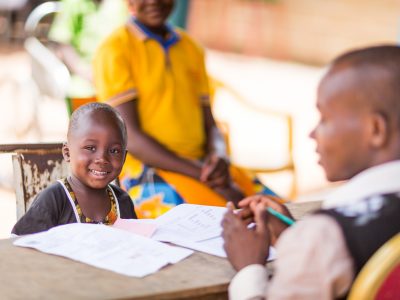
Does a Child Have to Be a Christian to Enroll in Our Sponsorship Program?
Children are welcomed into our programs regardless of their faith. Although, we are unapologetically Christian and every child development center is connected to a Christian church or ministry.
That’s one of the things that makes us distinct. We’re church based.
While we provide the children and their families the opportunity to see living faith in action, hear the Gospel and be discipled in the ways of Christ, neither they nor their families are under any compulsion to become Christians.
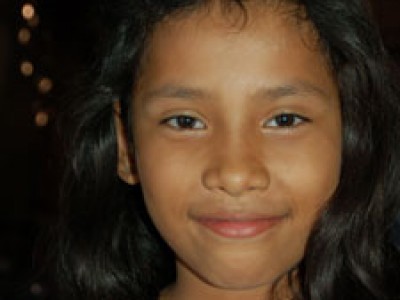
WANTED: the Freedom to be a Kid
According to the United Nation’s International Labor Organization, “Child labor is every work activity that children and adolescents do before turning 18 years old, that affects their physical, social, intellectual, psychological and moral development.” And poverty is a key contributor to the prevalence of child labor.
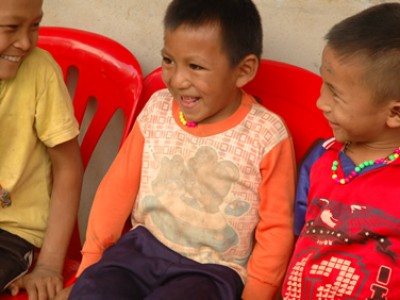
Three Things All Sponsors Should Know
What three things do you wish someone had told you when you first began sponsoring a child? What three things do you wish you understood about our child sponsorship program?
We asked numerous employees throughout our organization the same questions, but with a twist. We asked them to share the three things they thought you should know, based on the questions they frequently receive.
Fewer Children Are Dying
Good news from the government is pretty rare. Good news in the media is even more rare. So when I read this headline the other day, I smiled: “WHO sees good progress on UN health goals for poor.”
According to a recent study by the U.N.’s World Health Organization, good progress is being made on health-related Millennium Development Goals (MDGs).
- Fewer children are dying.
- The estimated percentage of underweight children under 5 has dropped.
- New HIV infections have declined.
- Existing cases of tuberculosis are declining.
- The world is on track to achieve the MDG target on access to safe drinking water.
Let’s just pause for a moment to let this sink in. We are making progress. Let’s celebrate this!
Of course, this doesn’t mean we can slow down in our fight against global poverty. If anything, seeing progress should motivate us to work even harder. And, as has been mentioned around here before, eliminating extreme poverty is just a matter of priorities.
The annual income of Christian American churchgoers is $5.2 trillion. The amount of money needed to end global poverty is about $74 billion a year. … Basically, 1 percent of our annual income a year is what is needed to end extreme poverty.
So the question is, what are your priorities?
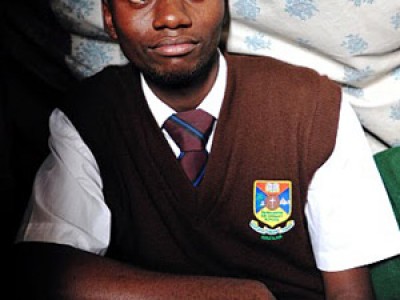
Heroes Don’t Always Wear Capes
I sat in a crowded, dank space and listened to the rain water dripping.
I squinted in the dark and leaned in to hear the quiet voice of Vincent, a sponsored child, living in the heart of Kenya, in the middle of Hell, known as Mathare Valley. He was an orphan, a child thrust into adulthood too soon, leading his family of siblings, alone.
Take a Step: Change Doesn’t Happen When You Stand Still
I’m still not quite sure how I made it to Phoolwari Child Development Center in Delhi’s Suraj Park slum, but perhaps one never understands the directions and way to the places that exist beneath the radar.
I remember looking out the window of the van and noticing the markets, the vibrant colors of the fruits, the beautiful sarees and then the almost instantaneous transition to a land devastated by waste and trash. A desperate look in the eyes of all the children, women and men crowded together in the hollows of the dirt pathways lined with small dirt and cardboard-built homes.
Suraj Park is one of Delhi’s largest slums, with more than 400,000 people living there. I traveled small dirt pathways littered with trash and waste. Children and older women stopped and stared as my group passed (literally squeezed) by them. I wondered if they too were trying to understand how I had made it to the slum.
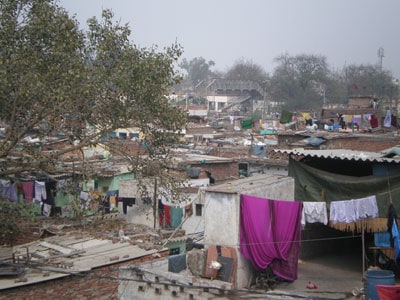
The Children’s Mite
Children are the most ignored and vulnerable group in Bangladesh, and the children we serve there are some of the poorest in the world.
But these children, who live in circumstances we can’t imagine, are learning to see hope in their lives and how to help others.
When they heard about the Jan. 12 earthquake in Haiti and that Compassion-assisted children were affected, it broke their hearts. Every day they were at the development center, they prayed. But they went beyond that as well.
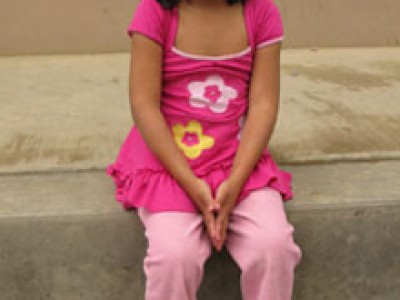
Why Children Leave Compassion International’s Child Sponsorship Program
At only 5 years of age, Michelle had to say goodbye to one of the places she loves the most: her child development center.
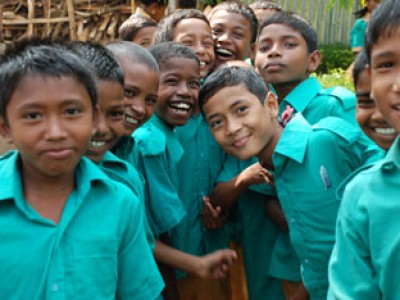
Serving the Santal Tribe of Bangladesh
The people of the Santal community have lived in the northwest region of Bangladesh for hundreds of years. They are one of the major tribes in Bangladesh.
The features of the Santal people are quite similar to those of the Bengali people, the original inhabitants of Bangladesh, but the Santal people are a bit darker in color and have curly hair.
The Santal people practice ethnic religions or idolism. They do not practice Hinduism, but they worship several Hindu gods along with nature. They have their own tribe language, called Santali. It is completely different from the Bengali mother tongue, Bangla.
About a century ago, the Santal tribe possessed vast land properties in the northern part of Bangladesh. But according to Santal history, some cunning people from other communities took advantage of their addiction to home-made alcohol called Chuani and grabbed their land, not only making the Santal tribe poor but also ruling them for decades.
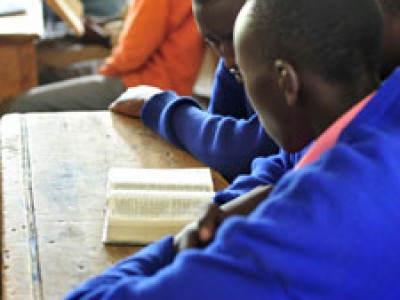
What Does My Sponsored Child Learn at the Child Development Center?
By attending classes at his or her child development center your sponsored child receives age-appropriate instruction in four main areas: spiritual, cognitive, physical and socio-emotional.
At KE-630, Good Shepard Isinya Student Center, all the children begin their Saturday at 9 a.m. with spiritual learning.
This Blog is Going to Kenya
We’re traveling with the Compassion Bloggers on their latest trip to see our ministry in action, Mar. 4 -10, and our goal is to help you feel a little closer to the children you sponsor, even if you don’t happen to sponsor a child in Kenya.
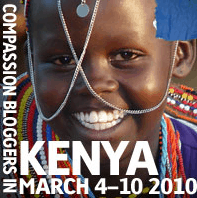 While we’re in Kenya, we’ll be looking to blog about the hows and whys behind the work our church partners and country staff perform. We want to give you that “Sponsorship 201” experience, something to complement the stunning, inspirational and tender stories our traveling companions will be delivering, and something that builds upon your existing relationship with us.
While we’re in Kenya, we’ll be looking to blog about the hows and whys behind the work our church partners and country staff perform. We want to give you that “Sponsorship 201” experience, something to complement the stunning, inspirational and tender stories our traveling companions will be delivering, and something that builds upon your existing relationship with us.
We’ll be visiting these four child development centers, and these kids, who are waiting to be sponsored, are registered at them. If you sponsor one of the children, it’ll make this blog trip much more meaningful for you. You’ll get a great look at your child’s world without having to leave the comfort of your home.
- KE-301, Kawangware Child Development Center
- KE-355, Mathare Community Outreach Child Development Center
- KE-611, Kabuku St. John Child Development Center
KE 555, Olturoto Child Development Center- KE-630, Good Shepard Isinya Student Center
KE-727, Jericho Child Development Center- KE-737, Kiserian Child Development Center
See you in Kenya.
Follow all of the Compassion Bloggers Kenya blog team on Twitter.
Visit compassionbloggers.com on a daily basis to make this journey through the words, pictures and videos of the other Compassion Bloggers.
Serving the Garo Tribe in Bangladesh
The Garo community is one of the major tribes in Bangladesh. According to the history books, the Garo tribe entered Bangladesh in the first century. They were refugees from Mongolia and came to this region through Tibet.
The Garo have stayed in Bangladesh for thousands of years. Initially, they followed a religion called Sonatoni. Today, nearly 100 percent of the Garo tribe practices Christianity, though a few still believe in Sonatoni.
Garos have their own language, Achick, which is completely different from the local language, Bengali. Achik has several accents/branches such as Habeng, Attong, etc.
The Garo tribe also has its own culture. Their dress, food habits and celebration styles can be easily distinguished from the Bengalis and other tribes.
The people from the Garo tribe have different features than the original inhabitants of Bangladesh (Bengali people). They are a little shorter and have fair skin. Their eyes and nose are similar to their ancestors from Mongolia.
Compared to the other tribal groups, the Garo tribe is little advanced in education and social activities. The first Garo church (Garo Baptist Convention) was established in 1910. Many missionaries and evangelists from Europe and North America worked among the Garo people over the decades.


